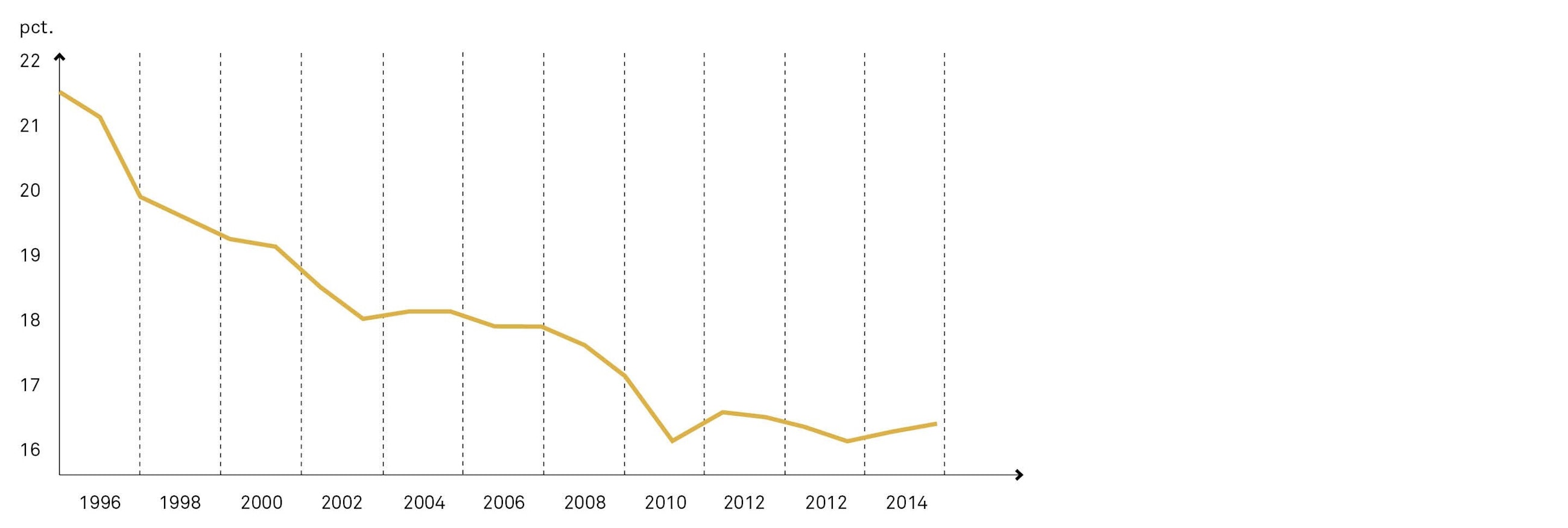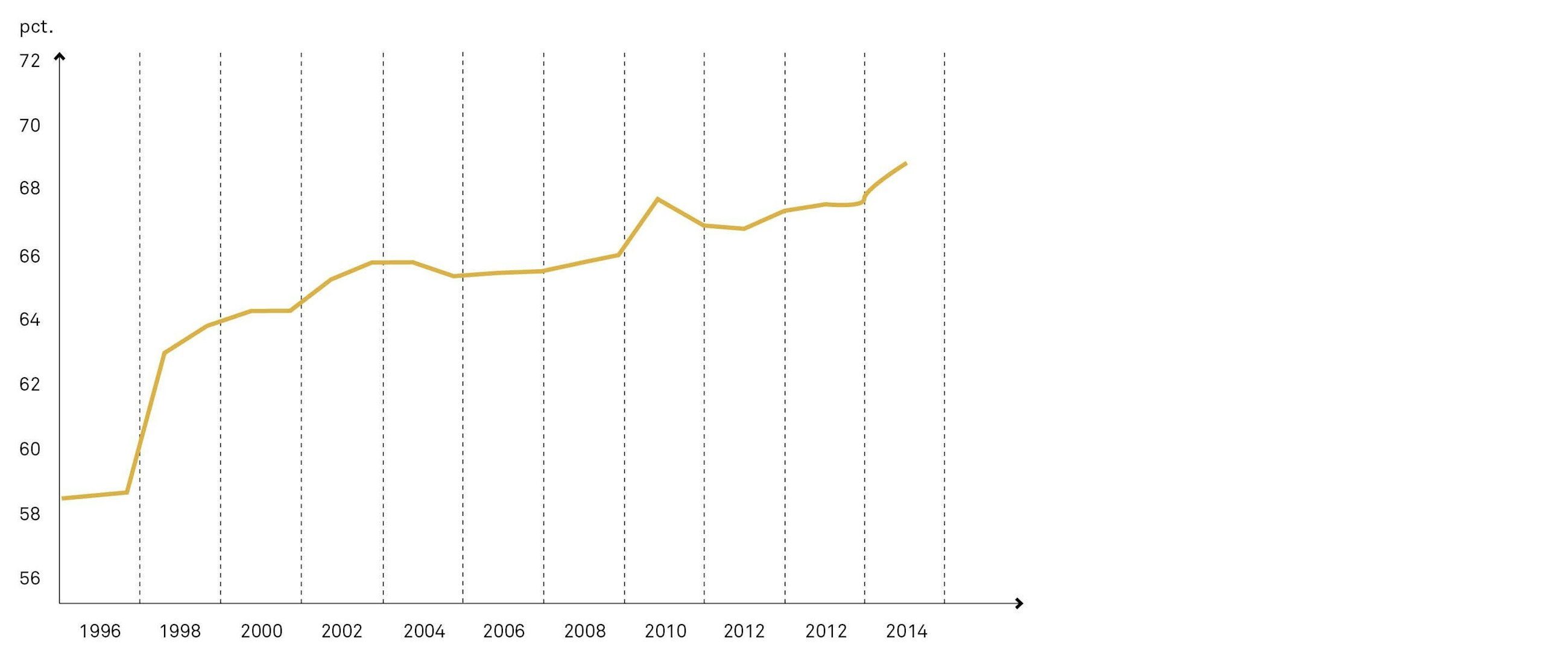Driving growth through services
24 May 2018
In the age of commoditisation, companies are transitioning into using services as a growth driver. With a fancy word, this is called servitisation.
Commoditisation happens for many different reasons. And servitisation can be the solution for most product-oriented organisations.
A company nightmare of being just a commodity
Shorter product lifespans, rapidly changing customer needs, globalisation and increasing ease of copying products. This is the reality that companies face today – a reality where a product quickly becomes just a commodity. Consequently, many companies are feeling commoditisation closing in on them, and fighting commoditisation means fighting for you and your products to stay relevant while differentiating from your competitors.
The strategy typically pursued by product-oriented companies is to reduce time to market to stay relevant to their customers and differentiate from their competitors. However, with technology changing ever faster this becomes like running on a treadmill: you might get better, but you most likely won’t go far. The question often becomes how to split the difference between optimising existing products versus betting on radical new product innovations. But these are not your only options.
Compete by adding services to your products
There is a different approach to meeting commoditisation: you can extend your focus from product development to business development. Studies and experience show that transforming your product business from manufacturing and selling products to a mix between selling products and delivering service can drastically increase revenue and profit margins, drive higher customer loyalty, while providing a more stable source of income.
This transformation from selling products to (also) delivering services is called servitisation. So, it is just a fancy word that simply means companies transitioning into increasingly using services as a growth driver.
The futility of only developing your products
If we take a step back and look at the data, two tendencies emerge:
The data reveals that value found in production alone is declining, while the impact created from services is increasing. Additionally, studies show that services lead to increased revenue and at the same time have higher profit margins than selling products (Neely, 2008; Gebauer et al., 2005; Oliva & Kallenberg, 2003; Wise & Baumgartner, 1999; Rabetino et al., 2016; Vandermerwe & Rada, 1988).
If we look at this from a technology perspective, we see IoT (Internet of Things) and industry 4.0 as two of the most influential emerging technologies. And here it is predicted that about 95% of all IoT revenue will come from services rather than products.
Bottom line: Regardless of how you look at it, focusing solely on selling products will not be sustainable for most companies.
Products today, service tomorrow
Switching from being product-based to service-oriented can be done in many ways: adding services to existing products (like maintenance), renting or leasing products to customers or even switching to offering consultancy services, like doing the job your customer originally bought your products to finish.
One of the most famous examples from the industry is Rolls-Royce, changing their operating model from selling jet engines to selling “power by the hour”. No flight takes off without an engine that works perfectly. If your company could also benefit from adding services to your operating model, then pay extra attention to servitisation.
The optimal mix is the key to success
Companies that have successfully servitised can give us one of the important takeaways: you shouldn’t perceive yourself as either a product company or a service company. Instead you should focus on how to find the optimal mix between selling and developing products and delivering services.
Finding the optimal mix, of course, requires you to focus on both the operational and commercial aspects of your organisation. In effect, servitisation opens the possibility of fighting commoditisation in more than one way. This competitive advantage can help differentiate your company from your competitors while increasing the customer satisfaction.
Balancing services and products
Servitisation as an approach to fighting commoditisation opens a whole new way of competing. It can easily become complicated, and not everyone succeeds. Therefore, it is important to remember that:
- The question is not whether to sell products or deliver services. Rather, you should aim to find the balance between the two in order to optimise your business.
- Services have higher revenues and profit margins than selling products.
- The transformation from selling and manufacturing products to delivering services affects the entire organisation. Make sure to take the commercial as well as the operational aspects of your business into account.
"Transforming service and it’s solutions services is a journey for both Philips HealthSystems and our customers. They are used to seeing us as a product manufacturer, and their buying processes are set up around that. Now we need to change their perception and help them see the many benefits our service solutions offer. Therefore, we need to be ever more aware of our customers’ needs, their challenges within the healthspaces and align expectations in the new relations created by services. We believe that in order to best succeed in our servitisation efforts we need an open dialogue about our thoughts and expectations. How much of our business is going to be driven by services is yet unknown and will, in the end, be up to the customers. But the question of whether we need to increase our focus on services or not is clear. This is a must-win battle.”
Thomas W. Saabye, District Service and Operation Manager, Philips HealthSystems.
Literature
Baines, T., & Lightfoot, H. (2013). Made to Serve: How Manufacturers Can Compete Through Servitization and Product-Service Systems. WILEY.
Gebauer, H., Fleisch, E., & Friedli, T. (2005). Overcoming the Service Paradox in Manufacturing Companies. European Management Journal, 23 (1), 14-26.
Neely, A. (2008). Exploring the Financial Consequences of the Servitization of Manufacturing. Operations Management Research, 1, 1-50.
Oliva, R., & Kallenberg, R. (2003). Managing the Transition from Products to Services. International Journal of Service Industry Management, 14(2), 160-172.
Rabetino, R., Kohtamäki, M., & Gebauer, H. (2016). Strategy Map of Servitization. International Journal of Production Economics.
Vandermerwe, S., & Rada, J. (1988). Servitization of Business: Adding Value by Adding Services. European Management Journal, 6(4), 314-324.
Wise, R., & Baumgartner, P. (1999). Go Downstream: The New Profit Imperative in Manufacturing. Harvard Business Review, 77 (5), 133-141.







